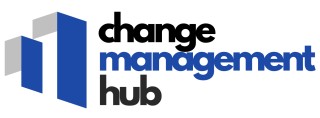What is a Gemba Board?
Exploring the Concept and Functionality
A Gemba Board is a powerful tool used within the scope of lean manufacturing and change management. The term "Gemba" originates from the Japanese word "Genba," meaning "the real place." In the context of managerial processes, it refers to the place where work actually happens. Gemba Boards play a crucial role in visual management by enabling teams to monitor and display vital information about ongoing processes in real time. These boards can be physical, like a dry-erase magnetic board, or digital, known as digital Gemba boards. They are prominently used to track progress, display data such as team performance metrics, process status updates, and to facilitate communication during Gemba walks – structured observations of the current work state. This tool aids not only in identifying areas for improvement but also in maintaining safety standards and ensuring continuous improvement. Incorporated as part of a broader change management strategy, Gemba Boards serve to visually represent and track the workflow status, helping team members to stay informed on critical aspects like performance metrics and process improvements. They enable data-driven decisions by making essential information accessible at a glance. Furthermore, such boards encourage team members to engage in open discussions about potential improvements, which is pivotal in the dynamic arena of managing change. For those looking to deepen their understanding of how Gemba Boards can be effectively utilized within change management and to navigate the challenges that come with implementation and adaptation, you may explore understanding unorganized and disorganized change management as a foundational step.The Importance of Visual Management in Change
Unlocking the Power of Visualization in Change
Visual management is a critical component of effective change management. By utilizing gemba boards, organizations can create a transparent environment where team members instantly grasp the current status of projects or processes. These boards serve as visual controls, delineating key performance indicators, project timelines, and improvement opportunities.
A gemba board essentially acts as a mirror, reflecting real time data and enabling teams to identify bottlenecks in processes. Whether analog or digital gemba solutions are used, the fundamental goal remains consistent—to offer continuous status updates and track progress seamlessly.
This approach is particularly valuable in lean manufacturing, where data driven practices are essential. Visual management encourages team collaboration and enhances process efficiency. By synthesizing lean principles with visual cues, organizations can foster a culture of continuous improvement and engage team members in proactive problem-solving through regular gemba walks.
Moreover, magnetic boards often permit the easy rearrangement of information, allowing quick adjustments that align with dynamic process requirements. Thus, they are more than just instruments for monitoring; these boards become pivotal tools in driving sustainable change. In challenging environments like manufacturing, where safety and efficiency are non-negotiable, visual management can significantly enhance operational safety and reduce time wastage.
For further exploration of the domains that intersect with these visual tools in change management, visit this comprehensive guide.
Integrating Gemba Boards into Change Management Strategies
Implementing Gemba Boards for Seamless Change
Integrating Gemba boards into change management strategies can greatly enhance your organizational performance. These boards serve as a tool for visual management by providing a clear line of sight to the status of various ongoing processes. In turn, this transparency helps team members identify areas for improvement based on real-time data. Using Gemba boards, teams can track progress for continuous improvement projects more effectively. This is particularly pivotal in sectors like lean manufacturing, where time efficiency and the reduction of waste are crucial goals. Aligning these tools with real-time performance metrics ensures that teams stay informed about any changes in the process. Gemba boards can range from board magnetic tools to digital Gemba systems. The choice among these tools should depend on the specific needs of your organization. For example, a digital Gemba board provides quick status updates, making it easier to adjust strategies as needed. On the other hand, a dry-erase version of a Gemba board allows for flexible planning and easy adjustments during daily meetings or Gemba walks. Moreover, integrating these visual controls can also support the safety of the workplace by ensuring everyone on the floor understands the current status of operations. By displaying data clearly and concisely, Gemba boards aid in managing teams efficiently, promoting a culture centered on continuous improvement and heightened accountability. To successfully implement Gemba boards in your change management strategies, it might help to draw from existing case studies, as they offer insights into how different organizations have effectively utilized these tools in their processes. Integrating knowledge gleaned from such reflections can help fine-tune your approach and maximize the efficiency of your change management efforts. For further insights on enhancing organizational processes, you can explore how decision-making is influenced in quality management systems here.Case Studies: Successful Change Management with Gemba Boards
Real-World Applications of Gemba Boards
In the realm of change management, the application of Gemba boards has proven transformative for many organizations. These boards, often magnetic and dry-erase, serve as a cornerstone for visual management, allowing teams to track progress and drive continuous improvement. Here, we explore some case studies that highlight their effectiveness in fostering successful change management.
Case Study 1: Lean Manufacturing Enhancement
In a manufacturing setting, a company implemented Gemba boards to enhance their lean manufacturing processes. By using these boards, teams were able to conduct daily Gemba walks, providing real-time status updates and visual controls. This approach enabled team members to identify bottlenecks and inefficiencies quickly. As a result, the company saw a significant improvement in their production line performance, reducing waste and increasing productivity.
Case Study 2: Improving Safety Protocols
Another example comes from an organization focusing on safety improvements. By integrating Gemba boards into their safety management strategy, the team could visually track safety incidents and near-misses. This visual data-driven approach allowed them to implement timely corrective actions, enhancing overall workplace safety. The boards facilitated communication and ensured that all team members were aligned with the safety protocols.
Case Study 3: Enhancing Team Collaboration
A service-oriented company utilized Gemba boards to improve team collaboration and communication. By displaying key performance indicators and process status on the boards, teams could engage in meaningful discussions during their Gemba walks. This practice fostered a culture of transparency and accountability, leading to more effective problem-solving and process improvements.
These case studies illustrate the potential of Gemba boards to transform change management strategies. By providing a platform for visual management and continuous improvement, they empower teams to make informed decisions and drive successful change initiatives.













